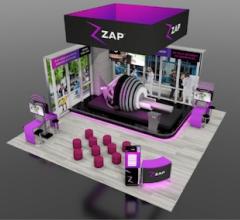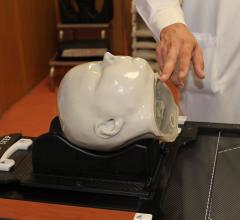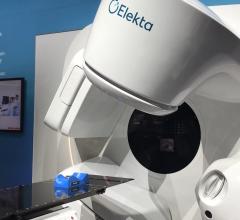
Joel Goldwein, M.D. is vice president of Medical Affairs for IMPAC Medical Systems, an Elekta company.
Where are the synergies of bringing together Elekta and IMPAC?
The synergies are numerous, but all converge on our ability to provide software that supports the full spectrum of cancer care. Moreover, our combined resources allow both increased efficiencies and improved clinical and business operations. Combining the expertise from both companies brings forth opportunities to use the strengths of both companies and deliver on our mission to develop and apply open standards in implementing connectivity and integration with all delivery devices. IMPAC has traditionally been a leader and innovator in integration that allows cancer care centers and practices to manage clinical and administrative workflow efficiently.
The addition of Elekta greatly enhances our ability to increase these efficiencies and improve treatment. As a manufacturer that offers both compelling software and hardware products and possesses expertise in both, we are now equipped to execute on realizing our vision of providing the ultimate in integration in the user environment. Such a level of integration would probably have been impossible by either company on its own. A consequence of our merger, I believe, will be even more robust systems than have previously been seen in the industry. We intend to create these systems, while retaining open standards. We want our customers to be positioned to be able to use the very best new software available to treat cancer patients. Using an open architecture in our systems enables them to do just that.
What are the impacts in radiosurgery?
IMPAC already interfaces with and supports the machines manufactured by Elekta and others for stereotatic radiosurgery. With respect to Leksell Gamma Knife from Elekta, for example, our intent is to develop an interface to it some time in the next year. Additionally, we will extend our existing interfaces to Elekta equipment to which we are not yet interfacing. Obviously, this will be good news for Gamma Knife centers using linacs either from us in Elekta or from any other vendor. In fact, whatever equipment centers have, they will be able to integrate it with the central EMR in the MOSAIQ system to manage all processes related to the control of those machines and the flow of patients through the clinic.
What is IMPAC’s role in the treatment room?
Image guidance requires the application of various analysis techniques both at the delivery device and after treatment. We plan on providing the tools necessary for making rapid decisions both online at the point of delivery and more detailed, quantitative techniques offline. Many of our initiatives will directly support the integration of volume images and supporting analytical information. One project that functions as an indicator to where we are headed is the SYNERGISTIQ demonstration, which integrates the clinical workflow at the therapist’s console, enabling management of the delivery device from one common environment.
What was required for the marriage between Elekta and IMPAC?
For the sake of simplicity, I will say that all we need to do is support standards for the interoperability of electronic
medical record systems; the ability to exchange that data will follow. For example, standards currently exist for exchanging imaging data between information systems and for exchanging other health information data between disparate systems. As long as we support these standards, the limitations of exchanging data between information systems will be minimized. This is already happening. Already, we are exchanging an expanding breadth of data with hospital information systems, using standards that have been in the field for years now. Those standards are being extended to accommodate the complexities of managing the image-related data that has to go back and forth between different information systems. As long as we and other vendors consistently follow those standards, we should be able to exchange information among our respective systems.
It is important to note that no one vendor is likely to have an EMR that does everything. Medicine is far too complex for that. There are too many specialties. The system that supports, cardiology, for example, has a completely different set of requirements from systems for diagnostic radiology, emergency medicine, and, of course, oncology. In the foreseeable future, I think that the best that we are going to be able to do is provide conduits using standards that allow for the exchange of information among systems.
How does DICOM fit in with open standards?
It’s part of it. CCOW is big, but there are other standards for exchanging information that are beyond our specific industry such as standards that allow communication over the Internet. IMPAC is a charter member of the IHE-RO initiative organized by several professional societies and industry to work together as an industry/customer consortium to develop open standards. Once standards are agreed to and integration profiles are demonstrated, the industry may employ the HL7s and the DICOMs and the other standard technologies. Bearing development costs as a group allows resources that would go into developing proprietary standards to be re-channeled to workflow innovation.
There are additional benefits to developing and implementing a common standards-based approach as well as some realities that must be weighed. Let’s look at how the image-guided treatment management component interacts with image-guided radiation therapy. Our idea is to give clinicians, regardless of delivery or diagnostic device choice, a common environment for accessing and sharing information that allows for meaningful analysis of information garnered from multiple modalities.
The dependence on imaging has gone far beyond radiation oncology in terms of patient management. Today, the medical oncologist uses the very same images as the radiation oncologist and consequently also needs easy access to those images.
What is IMPAC’s vision for the next few years?
Oncology is a very complicated specialty. The discipline requires the expertise of many types of professionals, including nurses, therapists, physicists and oncologists. All must work as a team, directing their efforts to the patient. Our mission is to empower every member of the cancer care team to manage their patients more effectively and efficiently. The key is arming them with the information that they need when and where they need it. This is also IMPAC’s vision. We want to make the jobs of the people taking care of very sick patients easier and the lives of patients better. We provide the tools and information that enable cancer to be managed more effectively.


 September 12, 2025
September 12, 2025 









